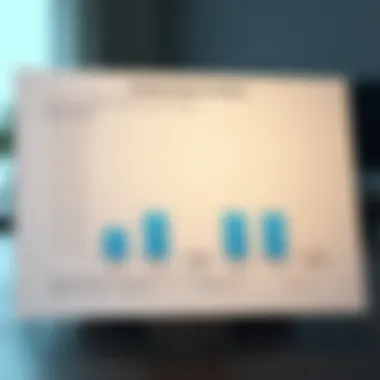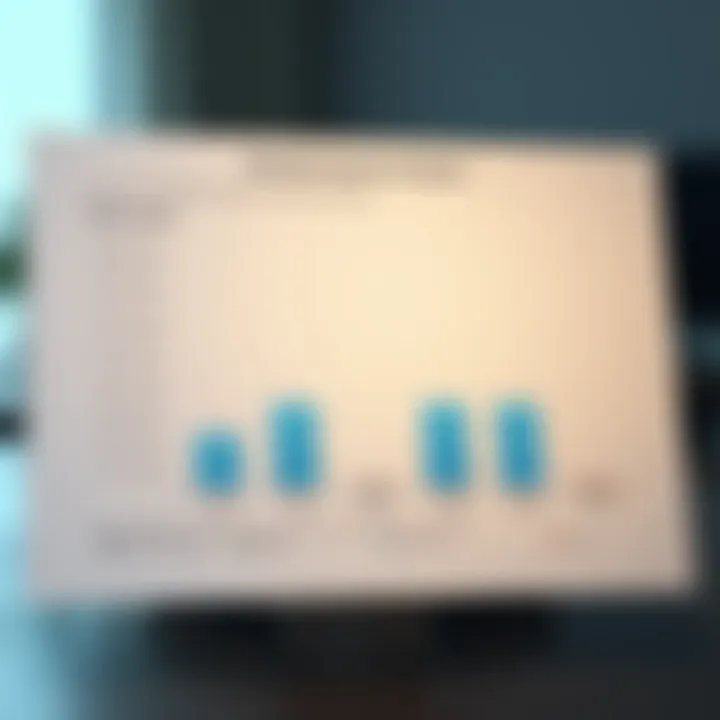Understanding the Impact of a $60,000 Down Payment


Intro
When it comes to investing in real estate, the journey often begins with a significant financial commitment — specifically, the down payment. A $60,000 down payment holds considerable weight in this equation, influencing not just how sizeable your mortgage might be, but also how you’ll navigate your financial path moving forward. This sum opens doors, potentially lowers interest rates, and sets the tone for your overall financial landscape.
In this article, we’ll explore various implications of making such a down payment. We’ll delve into key areas like credit management, home buying strategies, refinancing options, and even insurance essentials. Each section is designed to equip you with insights that contribute towards informed real estate decisions, enhancing both your current standing and long-term financial stability.
Understanding Down Payments
A down payment is more than just a financial statistic; it's a pivotal element in the realm of home ownership and real estate investment. Often, this initial investment is what separates potential buyers from their dream homes or investment properties. A $60,000 down payment can signify readiness and stability, enabling one to navigate the complex waters of financing a purchase effectively.
Down payments serve several key purposes in the real estate market:
- Risk Mitigation: For lenders, homeowners with a substantial down payment represent a lower risk. It shows commitment and financial ability, which often can lead to better mortgage terms.
- Equity Building: A larger down payment accelerates the equity that homeowners gain. Rather than chipping away at the loan amount, buyers can see a quicker return on their investment.
- Lower Monthly Payments: With a heftier down payment, monthly mortgage repayments get a trim. With less total loan to repay, it can mean more financial flexibility down the line.
Understanding down payments is crucial not just for potential homeowners, but also for investors and anyone looking to secure a stable financial future. Without this knowledge, many might overlook vital opportunities or saddle themselves with expensive mistakes.
What Constitutes a Down Payment
When considering a down payment, it's important to know what it actually consists of. At its core, a down payment is a percentage of the property's purchase price that buyers must pay upfront. This money essentially buys into the property and signifies the buyer's stake in it.
The specifics of a down payment can vary based on several factors:
- Percentage of Purchase Price: Generally, down payments can range from 3% to 20% or more of the home price. For a $200,000 house, a 20% down payment amounts to $40,000, while a 3% down payment means $6,000.
- Cash vs. Other Assets: While cash is the most straightforward way to fulfil a down payment, some buyers may use assets like stocks or bonds to fulfill this requirement. This can be useful for those who may have liquidity issues but substantial investments.
- Gifted Funds: Another often-used method involves receiving the money as a gift from family members. However, lenders usually require that the funds come from a verified source, which could entail some paperwork.
All these considerations highlight that a down payment isn't merely a financial transaction; it entails a deeper understanding of one’s financial status and market realities that require careful navigation.
The Significance of a Down Payment Amount
The amount of a down payment carries significant weight in the home buying process, and its implications can reverberate through an individual’s financial plan for years to come. A $60,000 down payment is not just a number; it's a gateway to many potential benefits.
- Interest Rates: Generally speaking, larger down payments can secure lower interest rates. This can save thousands over the life of the loan, making it a critical consideration for anyone looking to purchase property.
- Loan Types: Specific mortgages favor certain down payment amounts. For example, conventional loans prefer around 20% down to avoid private mortgage insurance (PMI). Conversely, FHA loans might allow lower down payments but have stricter qualification requirements.
- Financial Freedom: Lastly, a significant down payment can provide peace of mind. Knowing that a substantial equity stake exists in one’s property can lead to a greater sense of security during market fluctuations.
In the grand scheme of things, assessing the significance of the down payment amount opens the door to smarter real estate strategies and ultimately contributes to stronger long-term financial health.
The $60, Benchmark
When it comes to home-buying, down payment amounts can shape entirely different financial paths for potential buyers. Understanding the significance of a $60,000 down payment sits at the crossroads of opportunity and risk management in the housing market. This benchmark represents more than just a number; it can open various doors in terms of mortgage options, favorable interest rates, and the ability to build equity swiftly.
A down payment of this magnitude demonstrates financial commitment and stability, something lenders view favorably. It’s often a deciding factor that can influence a homebuyer’s ability to secure a mortgage at a lower interest rate, thus saving money over the life of the loan. Moreover, it highlights the importance of financial planning and readiness for the responsibilities that come with homeownership.
Setting the Stage: Housing Market Context
Before plopping down a chunky down payment, it’s crucial to grasp the current housing market. As of late 2023, the housing landscape is characterized by fluctuating prices and interest rates, which can greatly impact your strategy. Recent trends indicate that home values are on the rise, with many potential buyers grappling for limited inventory. In such a competitive environment, a down payment like $60,000 can provide an edge, potentially making offers more attractive to sellers who may favor buyers showing substantial commitment.
However, while having a solid down payment can bolster your bargaining position, it’s wise not to jump in with both feet without doing your homework. Consider key factors such as:
- Overall market conditions in your desired area,
- Average home prices relative to your budget,
- Potential for negotiation based on seller circumstances.
Recognizing how the market behaves will allow you to adjust your strategy and utilize your down payment to maximize your benefits.
Calculating the Required Down Payment
The calculation of a down payment isn’t merely a straightforward task. Understanding the ratios and required contributions can feel a bit like deciphering a maze at times. The $60,000 figure can yield different perceptions when stacked against the total home price. For instance, on a $300,000 house, this down payment represents a 20% commitment, which can save significantly on mortgage insurance and lead to better loan terms.


On the other hand, if you’re eyeing a home priced at $500,000, this amount only accounts for 12%. This distinction can make a world of difference in what you might face in monthly expenses and insurance premiums. It’s this delicate balancing act that highlights the importance of knowing your numbers.
To break it down:
- Determine Home Price: Understanding local real estate costs is vital.
- Down Payment Percentage: Calculate what your $60,000 represents in relation to your target price.
- Evaluate Financing Options: Different lenders may have unique requirements regarding down payment percentages.
What it boils down to is that a well-calculated down payment can ultimately secure a more favorable mortgage experience, allowing you to maneuver confidently through the hurdles of home buying.
Key Point: A $60,000 down payment signifies commitment and can be a significant advantage in negotiating favorable loan terms.
Mortgage Implications
Understanding mortgage implications is key when considering a down payment of $60,000. This amount can change the game for buyers. A substantial down payment like this offers not just security, but it can significantly shape the overall financial landscape of home ownership.
A down payment sets the foundation of a mortgage. It affects the type of mortgage a buyer can qualify for, influences interest rates, and determines the monthly payment and amortization structure. A well-thought-out down payment can mean a smoother financial ride in the future, reducing overall debt and providing opportunities for equity growth. Unlike throwing money into a bottomless pit, putting down a significant lump sum gives homeowners a stake in their property right from the get-go.
Types of Mortgages and Their Requirements
When it comes to mortgages, a $60,000 down payment opens doors to various options. Generally speaking, not all mortgages are created equal. Some types include:
- Conventional Loans: These are not insured by the federal government and typically require a down payment of 3% to 20%. With a $60,000 down, buyers can easily steer towards more favorable terms.
- FHA Loans: These loans are backed by the Federal Housing Administration and usually require a lower down payment. However, a $60,000 down payment can significantly minimize upfront insurance costs and monthly payments.
- VA Loans: For veterans and active service members, VA loans allow zero down payment options. In this case, the $60,000 could serve as a cushion for other expenses.
- Jumbo Loans: If the home price exceeds the conforming loan limits, a jumbo loan will come into play. Here a $60,000 down payment can substantially lower the loan-to-value ratio.
It’s crucial to check the specific requirements for each type, as they can vary based on lender policies, credit scores, and local regulations. A proactive approach to understanding these can save time and financial headaches later.
Influence on Interest Rates
Interest rates represent the cost of borrowing money. They are primarily influenced by market conditions and the buyer's financial profile. However, a larger down payment like $60,000 acts as a double-edged sword—slicing through high-interest costs. By lowering the loan-to-value ratio (LTV), lenders see a buyer as less of a risk. This can lead to attractive interest rates that can save thousands over the life of the loan.
- A mortgage with an LTV of 80% or lower can typically unlock lower interest rates compared to those with LTVs above this mark.
- On a practical level, even a small decrease in interest rates can significantly impact monthly payments and the total cost of the mortgage.
In essence, a $60,000 down payment carves a path towards reduced interest rates, facilitating a more manageable mortgage landscape.
Monthly Payments and Amortization
The monthly payment is a critical consideration when taking on a mortgage. A $60,000 down payment directly influences this aspect. Firstly, it reduces the principal amount borrowed. Let’s break this down:
If someone is buying a house worth $300,000 and puts down $60,000, they only need to finance $240,000. This can
- Lower the monthly payments, making housing more affordable.
- Make it easier to budget monthly expenses, freeing up cash for other obligations.
Amortization refers to the way loans are paid down over time, which is also affected by the down payment. A larger down payment means:
- Faster equity accumulation since you start off with a more considerable stake in the property.
- A quicker path towards principal reduction, which can lead to more significant savings in interest over time.
Financial Strategic Advantages
Understanding the financial strategic advantages of making a substantial down payment, such as $60,000, is crucial for anyone considering entering the real estate market. The level of the down payment can significantly influence not just the mortgage application process, but also long-term financial health. There’s an old saying that goes, "A penny saved is a penny earned." In real estate, that penny can become thousands over time if invested wisely through an adequate down payment.
Reducing Overall Debt Burden
Making a sizeable down payment helps set the stage for lower overall debt. When buyers fork out a significant upfront amount, they’re not just securing a loan with favorable terms but also grabbing a tighter grip on their finances. Instead of potentially being saddled with a 30-year mortgage that stretches the limits of affordability, individuals have the chance to take a more manageable path.
Here’s why reducing your overall debt matters:


- Lower Loan Amount: With a $60,000 down payment, the loan necessary for buying a home decreases. This reduction leads directly to lower monthly payments.
- Less Interest Paid Over Time: A smaller loan means that, ultimately, less interest will accrue. The math here is reasonably straightforward: the less you owe, the less you pay in terms of interest, saving hundreds or thousands throughout the mortgage's life.
- Improved Cash Flow: Less debt translates to having more breathing room each month. With reduced monthly payments, homeowners may find themselves in a place of financial comfort, allowing them to save for unforeseen expenses or invest in opportunities.
Moreover, it's essential to consider the psychological aspect of debt. The weight that comes with high mortgage payments can be onerous, leading to stress and limiting options for lifestyle choices. Reducing the overall debt burden through an adequate down payment can liberate individuals from the shackles of financial anxiety.
Building Equity More Quickly
Another key advantage of a hefty down payment is the acceleration in building equity. Equity is basically the difference between what you own of your home and what you owe. With a high down payment, you start off on a more solid ground of ownership, which can yield great benefits.
Here's how it all works out:
- Immediate Ownership: When you put down a substantial amount, you own a larger slice of your property right from the get-go. This provides a sense of security—the more equity you have, the stronger your financial position is.
- Faster Growth in Value: When property values rise, having a larger equity stake means that your financial investment not only grows quicker, but it also offers you beneficial options in the future, like tapping into that equity via a home equity line of credit, or HELOC, if needed.
- Increased Refinancing Options: If the value of the home appreciates, you have more flexibility to refinance your mortgage on favorable terms, since lenders usually look favorably at borrowers with higher equity ratios.
In summary, a $60,000 down payment isn’t merely a number—it’s a calculated strategic move that can make all the difference in the long run. Investing such an amount upfront can not only contribute to reduced overall debt burden but can also pave the way for rapid equity growth. In a world where financial stability is paramount, these elements play a vital role in ensuring that one’s footing in the real estate landscape remains solid.
Challenges of a $60, Down Payment
While a $60,000 down payment can open doors to homeownership and advantageous mortgage terms, it is crucial to scrutinize the challenges that may arise. This amount is not merely a sum to set aside; rather, it carries implications that could impact your financial future. Understanding these challenges offers a broader view of the risks and decisions involved. The focus on market volatility and opportunity costs reveals the complexities of committing a substantial amount of cash toward a down payment.
Market Volatility and Its Risks
The housing market is a beast of its own, often unpredictable and fluctuating. When you invest a hefty down payment like $60,000, you expose yourself to risks associated with market conditions. For instance, if property values decline post-purchase, that $60,000 may not hold the same value you believe it to have.
Take the case of a first-time homeowner who purchased in a seemingly booming neighborhood. They saved diligently for that down payment, and the moment they signed the dotted line, the market took a nosedive. Suddenly, homes in the area depreciated, turning their dream home into a costly burden from a financial standpoint.
Consider these points to navigate market volatility effectively:
- Research Local Trends: Knowing your neighborhood’s price fluctuations helps. A simple glance at historical data could provide insights into recurring market patterns.
- Contingency Plans: Have backup plans for longer holding periods should the market not perform as anticipated.
- Evaluate Timing: Is it the right time to buy? Timing is everything when it comes to real estate.
"A wise buyer plans for both the bright days and the stormy ones."
Opportunity Costs of Large Payments
This concept revolves around the potential gains foregone by locking away a significant amount of cash in a down payment instead of exploring other lucrative investment options. The question that needs to be addressed is: Could that $60,000 work harder elsewhere?
- Alternative Investments: Instead of pouring a large sum into a down payment, consider stocks, bonds, or funds that might yield better returns. The stock market, for example, historically offers robust average returns over time, often outpacing the appreciation of real estate.
- Liquidity Issues: When cash is tied up in real estate, you lose out on accessibility to your funds for emergencies or investment opportunities. Think about the unforeseen expenses that may arise in life, which cannot be paid out of a non-liquid asset.
- Diverse Portfolio: By having a well-rounded investment approach, you reduce risk across different sectors. That means you don’t put all your eggs in one basket.
Comparative Analysis with Smaller Down Payments
As we delve into the nuances of down payments, it becomes vital to undertake a comparative analysis with smaller down payments. This section will illuminate the varying pathways available for potential homebuyers, contrasting the advantages and challenges of a $60,000 down payment against smaller figures like 3% or 10%.
Many individuals may find themselves at a crossroads, trying to balance their financial strategies with real estate aspirations. A down payment of 3% or 10% can appear more manageable at first glance, especially for first-time homebuyers who may not have substantial savings. However, the implications stretch beyond sheer numbers. Small down payments could lead to higher monthly mortgage payments and possibly escalate the interest rates, a consideration that must not be underestimated.
Exploring % and % Down Payment Options
While a $60,000 down payment equates to about 20% on a $300,000 home, options like 3% or 10% can lower the upfront cash requirement substantially.
- 3% Down Payment:
- 10% Down Payment:
- Typically used by first-time home buyers, this low barrier can make homeownership accessible.
- However, this option often attracts Private Mortgage Insurance (PMI), which adds to the overall cost each month.
- That’s not to say it’s all negative; having less money tied up in the home allows buyers to maintain liquid assets for unforeseen expenses.
- A middle-ground approach that can reduce the burden of PMI while keeping initial costs lower than a full 20% down.
- It typically results in lower monthly payments compared to the 3% scenario while reducing the duration or severity of PMI payments.
- Buyers can still take advantage of lower equity build-up compared with a substantial down payment, impacting their long-term wealth accumulation.
Ultimately, determining whether to opt for a smaller down payment is about carefully weighing immediate liquidity against long-term financial health. In some cases, the difference in monthly expenses could influence a buyer’s quality of life after the home purchase.


Risk Assessment: High vs. Low Down Payments
When considering the landscape of home financing, assessing the risks between high and low down payments is paramount. Here’s how they measure up:
- High Down Payments (e.g., $60,000):
- Low Down Payments (3% or 10%):
- Reduced mortgage balance leads to lower interest payments over time.
- Homebuyers often secure better interest rates due to lower perceived risk by lenders.
- Greater equity from day one can prove beneficial in fluctuating markets.
- The potential for negative equity is higher, particularly in a downturn. For example, should housing prices dip, it could leave buyers owing more than their homes are worth.
- Higher monthly payments, which might not be sustainable for some families, combined with added costs of PMI adds further financial strain.
- Lastly, the long-term wealth accumulation through equity may lag significantly compared to those investing more upfront.
In summary, while smaller down payments can open doors, they come with strings attached; assessing your overall financial picture can help clarify the best path forward.
In the world of real estate, small decisions can lead to huge financial implications down the road.
In exploring these options, potential homeowners find themselves in a dance of decisions, each step carefully considered in light of their unique financial goals and life circumstances.
Long-Term Financial Planning
Long-term financial planning stands as a cornerstone for anyone looking to make informed decisions about their future, particularly when it comes to significant investments such as real estate. The implications of a $60,000 down payment extend far beyond immediate purchasing power; they weave into a larger tapestry involving personal goals, budgeting strategies, and retirement frameworks. Understanding the significance of this process can be a lifebuoy in turbulent economic waters, allowing individuals to align their monetary actions with broader life aspirations.
Setting Financial Goals
The first step in constructing a solid long-term financial plan revolves around setting clear financial goals. A $60,000 down payment can dramatically alter the trajectory of one's financial landscape, prompting one to seriously consider what they want to achieve. Here, goals can range widely:
- Homeownership Stability: Many aim to secure a stable living arrangement that provides not only shelter but also a sense of community.
- Equity Building: With a substantial down payment, individuals can start building equity more quickly. For some, this equity can serve as a financial safety net or leverage for future investments.
- Savings for Future Needs: Allocating funds towards other financial objectives, like a child's education or a vacation, becomes easier with a structured plan in place.
In practical terms, setting these goals involves assessing one's financial situation, understanding potential monthly payments post-purchase, and envisioning the end game. For instance, mapping out how a $60,000 down payment impacts mortgage terms gives clarity. Higher down payments often result in lower monthly payments or even better interest rates, allowing families a bit more leeway in their budgets for other expenses.
Integration with Retirement Planning
As important as immediate financial goals are, integrating a $60,000 down payment into a broader retirement strategy is equally crucial. People often overlook how their decisions in real estate can affect their retirement. A significant down payment can reduce the mortgage burden, thus freeing up cash flow. This allows individuals to allocate funds towards retirement accounts such as 401(k)s or IRAs.
Contemplating retirement along with home buying becomes vivid when one understands:
- Long-Term Investment Potential: A house could appreciate over time, serving as an asset that builds wealth for retirement. Investing wisely can turn the down payment into a powerful vehicle for future savings.
- Debt-Free Living Before Retirement: Aiming for a house that is paid off before reaching retirement age gives individuals the breathing room they need. It minimizes necessary expenses during retirement, thereby providing more comfort and flexibility.
- Emergency Funds Accessibility: With part of the down payment allocated toward establishing equity, homeowners can gain access to funds through home equity loans or lines of credit, providing a financial cushion during unforeseen circumstances.
To truly optimize your financial strategy, it's not just about the here and now; consider how your today influences your tomorrow.
By recognizing these confluences between down payments and future financial scenarios, individuals position themselves more favorably to weather life’s storms and seize opportunities as they arise.
For further reading, you might find it beneficial to visit the following resources:
- Investopedia on Financial Planning
- Khan Academy on Retirement Planning
- NSA.gov on Long-term Financial Goals.
Finale
Navigating a $60,000 down payment brings forth several considerations that can significantly impact one's financial landscape. This article examined not only the logistics of such a substantial sum but also the ramifications attached to it. The importance of a cogent understanding of these factors cannot be overstated for those looking to make a move in the real estate market.
Summarizing Key Takeaways
- Financial Leverage: A $60,000 down payment can provide a solid financial footing, potentially lowering the mortgage principal and showcasing financial responsibility to lenders.
- Interest Rate Advantages: Larger down payments often come with the perk of lower interest rates, which can lead to long-term savings and make monthly payments more manageable.
- Risk Mitigation: Engaging with a hefty down payment diminishes the risk of being underwater on a mortgage, which is vital during market downturns.
- Building Equity: With a more substantial initial investment, homeowners can build equity more swiftly, laying the groundwork for future financial opportunities.
Future Financial Considerations
As you chart your course in homeownership, keep these thoughts in mind:
- Consider how the down payment affects your cash flow moving forward. While it may seem tempting to put all savings into a down payment, keeping some liquid cash for emergencies is wise.
- Understand how this decision aligns with other financial goals, like retirement or education savings. Ensure that your strategy balances immediate home investments with long-term objectives.
- Stay informed on market trends. The economic climate can shift, influencing the value of properties and lending conditions; being adaptable helps in making sound decisions.
In summary, while a $60,000 down payment offers numerous benefits, careful thought and planning are necessary to harmonize it with one’s overall financial strategy. Housing, after all, is not just about ownership—it’s about building a stable and secure future.







